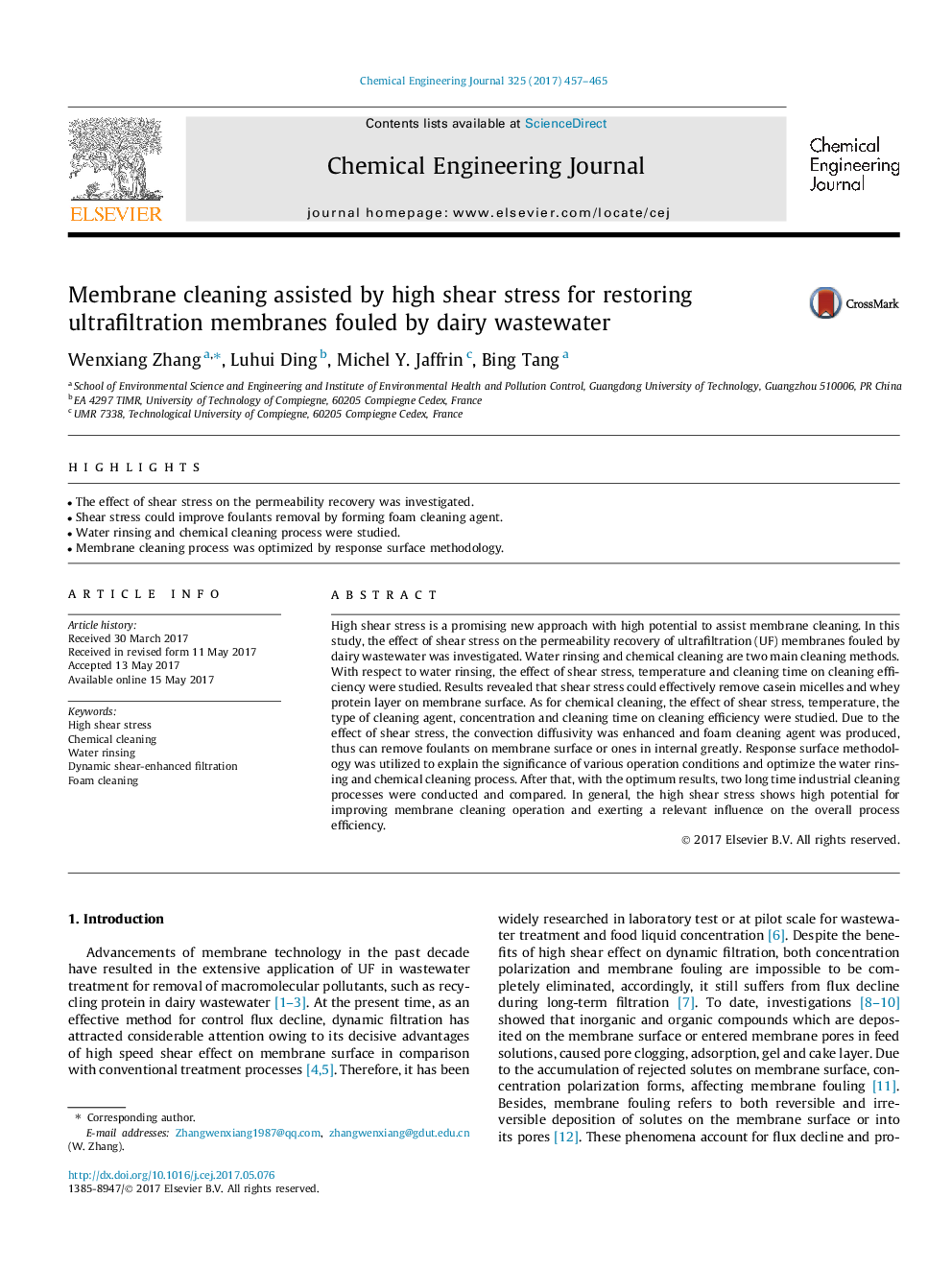| Article ID | Journal | Published Year | Pages | File Type |
|---|---|---|---|---|
| 6466133 | Chemical Engineering Journal | 2017 | 9 Pages |
â¢The effect of shear stress on the permeability recovery was investigated.â¢Shear stress could improve foulants removal by forming foam cleaning agent.â¢Water rinsing and chemical cleaning process were studied.â¢Membrane cleaning process was optimized by response surface methodology.
High shear stress is a promising new approach with high potential to assist membrane cleaning. In this study, the effect of shear stress on the permeability recovery of ultrafiltration (UF) membranes fouled by dairy wastewater was investigated. Water rinsing and chemical cleaning are two main cleaning methods. With respect to water rinsing, the effect of shear stress, temperature and cleaning time on cleaning efficiency were studied. Results revealed that shear stress could effectively remove casein micelles and whey protein layer on membrane surface. As for chemical cleaning, the effect of shear stress, temperature, the type of cleaning agent, concentration and cleaning time on cleaning efficiency were studied. Due to the effect of shear stress, the convection diffusivity was enhanced and foam cleaning agent was produced, thus can remove foulants on membrane surface or ones in internal greatly. Response surface methodology was utilized to explain the significance of various operation conditions and optimize the water rinsing and chemical cleaning process. After that, with the optimum results, two long time industrial cleaning processes were conducted and compared. In general, the high shear stress shows high potential for improving membrane cleaning operation and exerting a relevant influence on the overall process efficiency.
